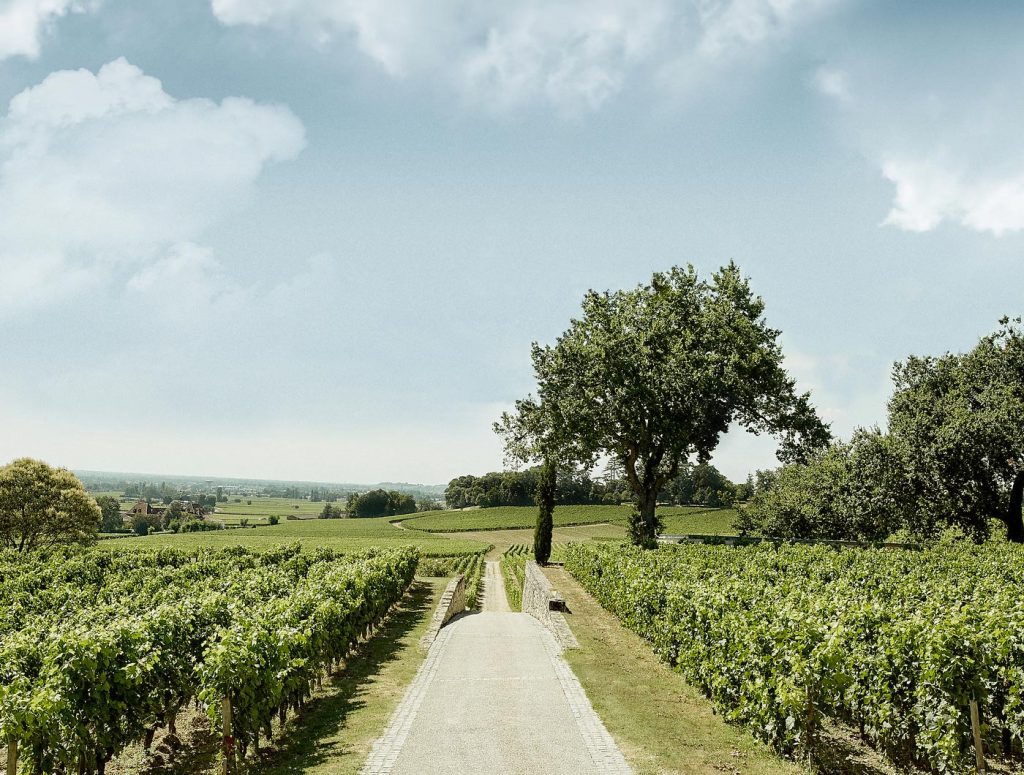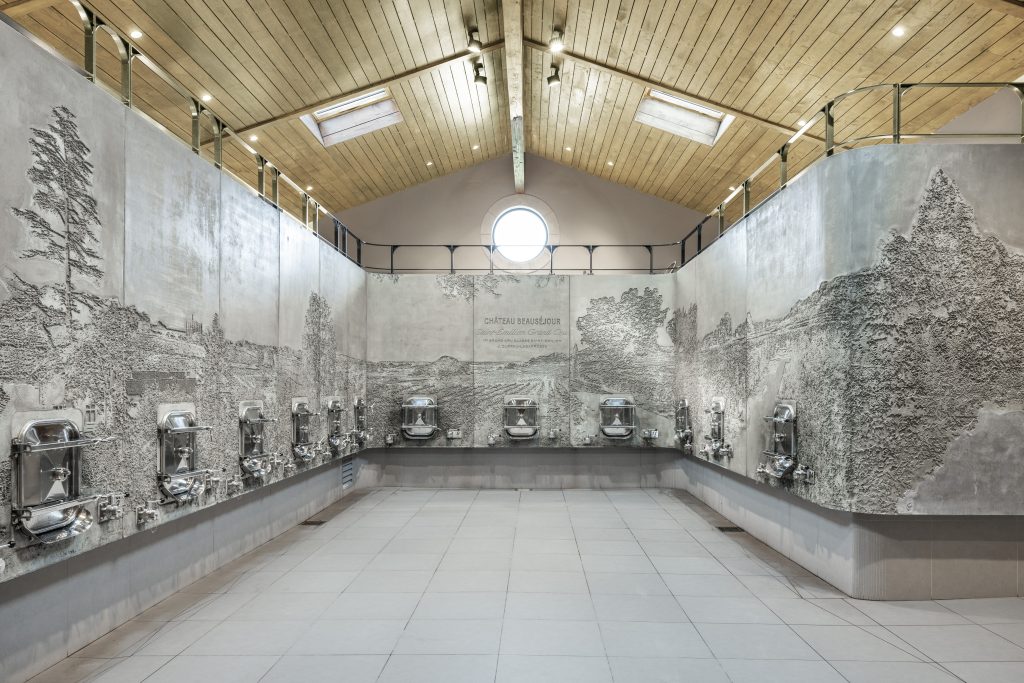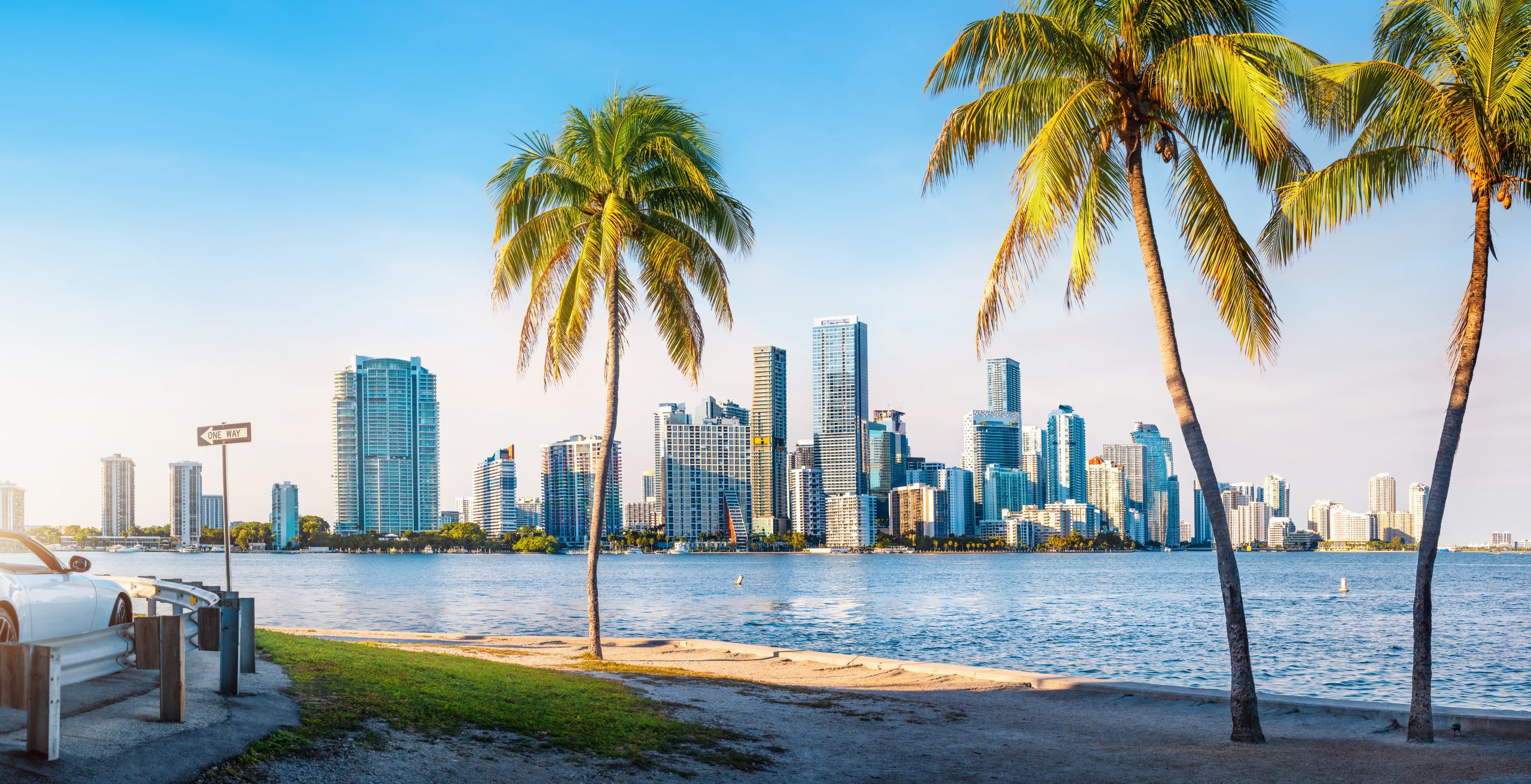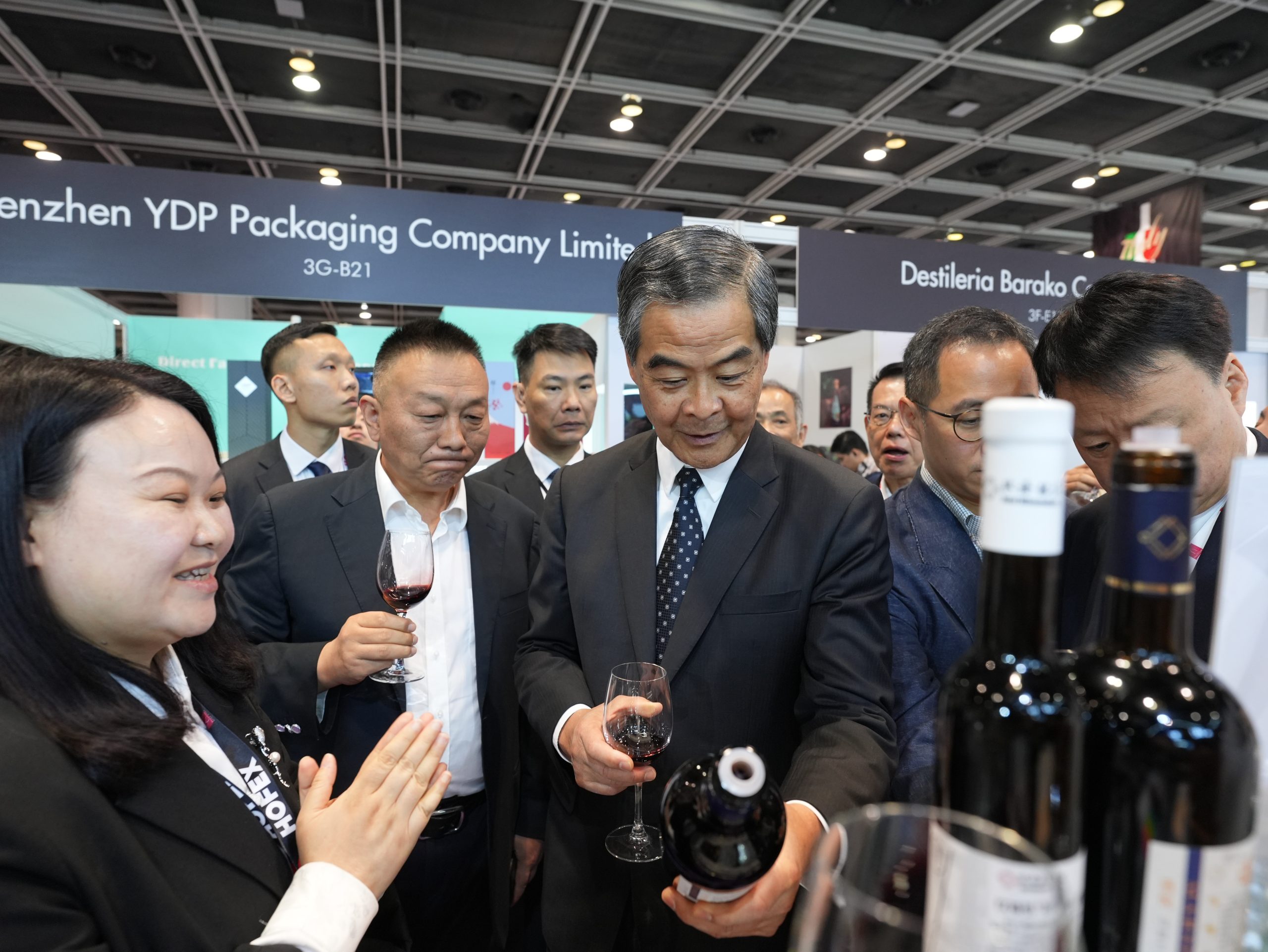Château Beauséjour: entering a new era
Three years after the dramatic sale of Bordeaux Château Beauséjour in 2021 caused ripples in Bordeaux, winemaker Joséphine Duffau-Lagarrosse speaks to Arabella Mileham about her ambitions for the estate, its revamped winery and the new era that is beckoning.

Speaking to the drinks business recently Joséphine Duffau-Lagarrosse, ninth generation of the Duffau-Lagarosse family who have farmed the estate since 1847, explains that buying back the family estate with investment from the Clarins cosmetics family has proved a huge opportunity.
Although the estate was family-owned and run by Duffau-Lagarrosse’s father as the estate manager, over time the ownership had become divided among multiple cousins, many of whom no longer living in the region (or even in France). It was, she says, with considerable understatement, “hard to manage an estate with 32 owners” especially as the majority tended to view it as something that paid them a dividend at the end of the year, rather than being invested in the life of the estate, or in the wines themselves.
The family decision to sell up was therefore a “very difficult” one for Josephine, who she was not working at the estate at the time, her father who managed the estate and her sister who all lived in the Right Bank.
Philippe Cuvelier, owner of Clos Fourtet, and Stephanie de Boüard-Rivoal of Angelus emerged as the main rivals for the estate, and it looked like the Cuvelier would succeed initially, meaning the property would continue to be managed by Nicolas Thienpont. However both prestigious vineyards were pipped to the post at the eleventh hour by a last-minute bid, which promised to keep the estate intact and in the family hands while paving the way for a renaissance. Meeting Prisca Courtin-Clarins who headed up her family’s investment holding, Clarins Investment Fund, proved pivotal to the determined Duffau-Lagarosse, who found in her a fellow entrepreneurial business women, with whom she clicked.
“We are the same generation (today, she’s 36 and I’m 33) and it was a natural, quick connection, even though we’re from different worlds,” she says. “I think we are quite similar on the term of character and personality.”
Having taken her father and uncle to see the property, Prisca and the Courtin-Clarin family were sufficiently charmed and excited to invest, with the offer being ultimately successful. Duffau-Lagarosse, who herself reinvested the proceeds of the sale into the business, became a minority partner, as well as the estate manager and winemaker. She also represents the commercial side of the business and has big plans to further enhance the already rising reputation of the estate.
As Mathew O’Connell of Bordeaux Index noted, the chateau has seen some great vintages over the last twenty years. “The 100-point RP vintages of 1990, 2009 and 2010 are always in demand but outside of these, the chateau remains somewhat under the radar,” he told db.
However, the change of ownership, the investments in a new vat room and the undoubted quality of the estate’s terroir – as well as Duffau-Lagarrosse’s vision – influenced by her Burgundian connections – “promise an exciting future”, he noted.
At only 6.8ha, it is one of the smallest estate in Saint-Émilion, and “more Burgundy in size”, according to Duffau-Lagarrosse, who admits that it is the ethos of Burgundy that has most influenced her as a winemaker. (Having started her winemaking career in 2011, she has gained experience working in Napa, New Zealand, Burgundy’s Domaine
George Noëllat, Mexico and Bordeaux).
“In Burgundy, there are no blends, so a very precise extraction is all you can do, you have fewer options to improve your wine. When they have only 20 hectolitres of Grand Cru, they have to be precise,” she explains.
And Château Beauséjour is already on the road to greater precision. This started with a small but carefully thought out restructure in the vineyard which saw half a hectare of Merlot replanted with Cabernet Franc.
“It’s difficult to restructure a vineyard when you are small, because if you take a parcel, it could be something like 20% of your area. So that means 20% of your production,” she says, but it was part of Duffau-Lagarrosse’s specific plan to rebalance the wines, changing the proportion of Cabernet Franc in the vineyard as well as the blend in order to maintain the wine’s pure aromas and balance. This has been particularly important in the face of global warming, to maintain the freshness, however she is keen to keep Cabernet Franc below a maximum of 35%.
“We want to rebalance the wine, as Merlot can be a bit too alcoholic and heavy – but if I do any more it will change the style of the wine and the soul of Beauséjour,” she explains.
There are also plans to change some of the rootstocks. The average age of the vineyard is 50 years old, with vines planted by Duffau-Lagarrosse’s grandfather but at that stage, the rootstocks were chosen in order to push the alcohol level, “it was better to have rootstock with a lot if vigour but nowadays we want more balanced production,” she says.
New winery

Partner Content
They are also changing the pruning regime little by little, but the biggest advance lies in the new winery, which has increased the number of vats from nine to 16, comprising 14 cement vats ranging from 30 hectolitres (the smallest cement vessels at any Saint-Émilion property) to 60 hectolitres, and two stainless steel vats. Construction began in January with the demolition of the old vats that had been used under Duffau-Lagarrosse’s grandparents, and the winery was completed in July, in time for the 2024 harvest. Although the changes do increase the total volume available by around 10%, the aim is primarily to increase the precision of the wines.
“Under my father and grandfather, we did more parcellaire selection, now we do inter-parcellaire selection,” she explains. “We have differences within the parcels and wanted to vinify them separately”.
Aesthetically, the new winery is “great”, she says – the landscape of the vineyards has been etched as a fresco across the vats themselves – while “technically, it’s amazing”. For example, the height and width ration increases the surface area contact between the cap and the juice, in order to achieve a softer, more controlled extraction.
“I love working with concrete, because of the purity and consistency of the temperature,” she adds.
Approachability
The new generation of consumers expect wines to be more approachable at a younger age while also retaining the ability to age, which Duffau-Lagarrosse says provided a challenge for producers. Increasing the precision, attention to detail, and pick dates, as well as balancing the pH enables growers to maintain a good pH, balance and freshness, she notes.
“It is a tricky balance, but we managed it with the 2022 and ’23, although ’24 will be more challenging” she said.
While ’22 was a “perfect vintage” with no disease pressure and a nice yield, the ’23 was more of a challenge, requiring a a lot of reflection on whether to green harvest or not and when to pick. It was, she notes, the longest-ever harvest at the property – nine days compared to the average four or five -but very precise picking enabled them to pick for optimal phenolic ripeness. “We started in the morning, then we stopped, and then the day after, or two days after, we were picking again, but just a few places.”
This wine was hailed one of the two greatest wines from Saint-Émilion of this year’s en primeur season, by db’s Bordeaux correspondent Colin Hay, who said it “transcended the challenges of the vintages and shattered each and every glass ceiling with which we might associate those challenges”.
It’s a hard act to follow, but Duffau-Lagarrosse remains confident, despite the 2024 proving to be “the most challenging vintage” in more than ten years of winemaking experience. There was frost, hail and mildew to contend with as well as a “weird growing season” that was hard to predict. “It was difficult to understand – when is going to start, when he’s going to finish, when the veraison would start or finish, really, it was weird growing season.”
Despite losing 35% in the vineyard on the back of these challenges, the team followed a “drastic” berry selection process to get the very best from each parcel, meaning they lost a further 15-20% in terms of yield. Overall, the average yield came out at around 23L/ ha, about 50% down, she said but it is nonetheless a very interesting and quality vintage.
Long term vision
In the long term, Duffau-Lagarosse hopes to push the quality even higher through increased precision in the winemaking. She has previously spoken about her ambition to see the estate reclassified as a Premier Grand Cru Classé A (currently it is a Premier Grand Cru Classé ‘B’) in the next classification, expected in 2032. However her ambition for the next 10 years is “about more than classification”. Indeed, the primary goal is to achieve high-level recognition and be included in the dream wine lists of connoisseurs, alongside wines such as La Tâche and Screaming Eagle.
“Our real ambition is to be the highest level – give me the dream wine list and I want us to be on it. It is very ambitious but we have everything to get onto that list.”
Related news
Newly promoted Chateau Figeac 2023 released at 40% discount
Saint-Émilion 2023, a vintage of glass ceilings
A classification in crisis: what next for Saint-Émilion
Why is Chateau La Gaffelier leaving the Saint-Émilion classification?
Related news
Saint Émilion 2023: Tasting notes
Saint Émilion 2023: a vintage of glass ceilings
En primeur: Haut-Médoc, Saint-Émilion, Pessac-Léognan and Sauternes wines released




